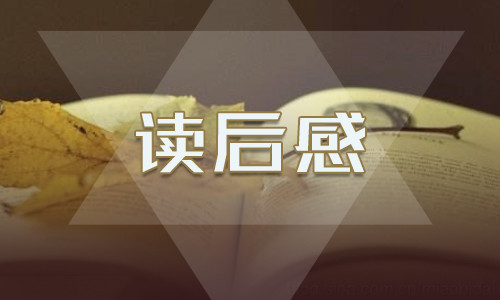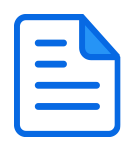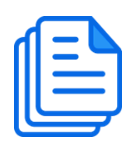公司财(英文版)库2
题
理精品文档
Multiple Choice Questions:
CHAPTER 2
Financial Statements & Cash Flow
I. DEFINITIONS
BALANCE SHEET
b 1. The financial statement showing a firm’s accounting value on a particular date is the: a. income statement. b. balance sheet. c. statement of cash flows. d. tax reconciliation statement. e. shareholders’ equity sheet. Difficulty level: Easy
CURRENT ASSETS
c 2. A current asset is: a. an item currently owned by the firm. b. an item that the firm expects to own within the next year. c. an item currently owned by the firm that will convert to cash within the next 12 months. d. the amount of cash on hand the firm currently shows on its balance sheet. e. the market value of all items currently owned by the firm. Difficulty level: Easy
LONG-TERM DEBT
b 3. The long-term debts of a firm are liabilities: a. that come due within the next 12 months. b. that do not come due for at least 12 months. c. owed to the firm’s suppliers. d. owed to the firm’s shareholders. e. the firm expects to incur within the next 12 months. Difficulty level: Easy
NET WORKING CAPITAL
e 4. Net working capital is defined as: a. total liabilities minus shareholders’ equity. b. current liabilities minus shareholders’ equity. c. fixed assets minus long-term liabilities. d. total assets minus total liabilities. e. current assets minus current liabilities. Difficulty level: Easy
LIQUID ASSETS
d 5. A(n) ____ asset is one which can be quickly converted into cash without significant
loss in value.
收集于网络,如有侵权请联系管理员删除
精品文档
a. current b. fixed c. intangible d. liquid e. long-term Difficulty level: Easy
INCOME STATEMENT
a 6. The financial statement summarizing a firm’s performance over a period of time is the: a. income statement. b. balance sheet. c. statement of cash flows. d. tax reconciliation statement. e. shareholders’ equity sheet. Difficulty level: Easy
NONCASH ITEMS
d 7. Noncash items refer to: a. the credit sales of a firm. b. the accounts payable of a firm. c. the costs incurred for the purchase of intangible fixed assets. d. expenses charged against revenues that do not directly affect cash flow. e. all accounts on the balance sheet other than cash on hand. Difficulty level: Easy
MARGINAL TAX RATES
e 8. Your _____ tax rate is the amount of tax payable on the next taxable dollar you earn. a. deductible b. residual c. total d. average e. marginal Difficulty level: Easy
AVERAGE TAX RATES
d 9. Your _____ tax rate measures the total taxes you pay divided by your taxable income. a. deductible b. residual c. total d. average e. marginal Difficulty level: Easy
CASH FLOW FROM OPERATING ACTIVITIES
a 10. _____ refers to the cash flow that results from the firm’s ongoing, normal business
activities.
收集于网络,如有侵权请联系管理员删除
精品文档
a. Cash flow from operating activities b. Capital spending c. Net working capital d. Cash flow from assets e. Cash flow to creditors Difficulty level: Medium
CASH FLOW FROM INVESTING
b 11. _____ refers to the changes in net capital assets. a. Operating cash flow b. Cash flow from investing c. Net working capital d. Cash flow from assets e. Cash flow to creditors Difficulty level: Medium
NET WORKING CAPITAL
c 12. _____ refers to the difference between a firm’s current assets and its current liabilities. a. Operating cash flow b. Capital spending c. Net working capital d. Cash flow from assets e. Cash flow to creditors Difficulty level: Easy
CASH FLOW OF OPERATIONS
d 13. _____ refers to the net total cash flow of the firm available for distribution to its
creditors and stockholders.
a. Operating cash flow b. Capital spending c. Net working capital d. Cash flow from operations e. Cash flow to creditors
CASH FLOW TO CREDITORS
e 14. _____ refers to the firm’s interest payments less any net new borrowing. a. Operating cash flow b. Capital spending c. Net working capital d. Cash flow from shareholders e. Cash flow to creditors
CASH FLOW TO STOCKHOLDERS
e 15. _____ refers to the firm’s dividend payments less any net new equity raised. a. Operating cash flow b. Capital spending c. Net working capital d. Cash flow from creditors
收集于网络,如有侵权请联系管理员删除
精品文档
e. Cash flow to stockholders
EARNINGS PER SHARE
a 16. Earnings per share is equal to: a. net income divided by the total number of shares outstanding. b. net income divided by the par value of the common stock. c. gross income multiplied by the par value of the common stock. d. operating income divided by the par value of the common stock. e. net income divided by total shareholders’ equity.
DIVIDENDS PER SHARE
b 17. Dividends per share is equal to dividends paid: a. divided by the par value of common stock. b. divided by the total number of shares outstanding. c. divided by total shareholders’ equity. d. multiplied by the par value of the common stock. e. multiplied by the total number of shares outstanding.
II. CONCEPTS
CURRENT ASSETS
a 18. Which of the following are included in current assets? I. equipment II. inventory III. accounts payable IV. cash a. II and IV only b. I and III only c. I, II, and IV only d. III and IV only e. II, III, and IV only
CURRENT LIABILITIES
b 19. Which of the following are included in current liabilities? I. note payable to a supplier in eighteen months II. debt payable to a mortgage company in nine months III. accounts payable to suppliers IV. loan payable to the bank in fourteen months a. I and III only b. II and III only c. III and IV only d. II, III, and IV only e. I, II, and III only
BALANCE SHEET
d 20. An increase in total assets:
a. means that net working capital is also increasing. b. requires an investment in fixed assets.
c. means that shareholders’ equity must also increase.
d. must be offset by an equal increase in liabilities and shareholders’ equity. e. can only occur when a firm has positive net income.
收集于网络,如有侵权请联系管理员删除





